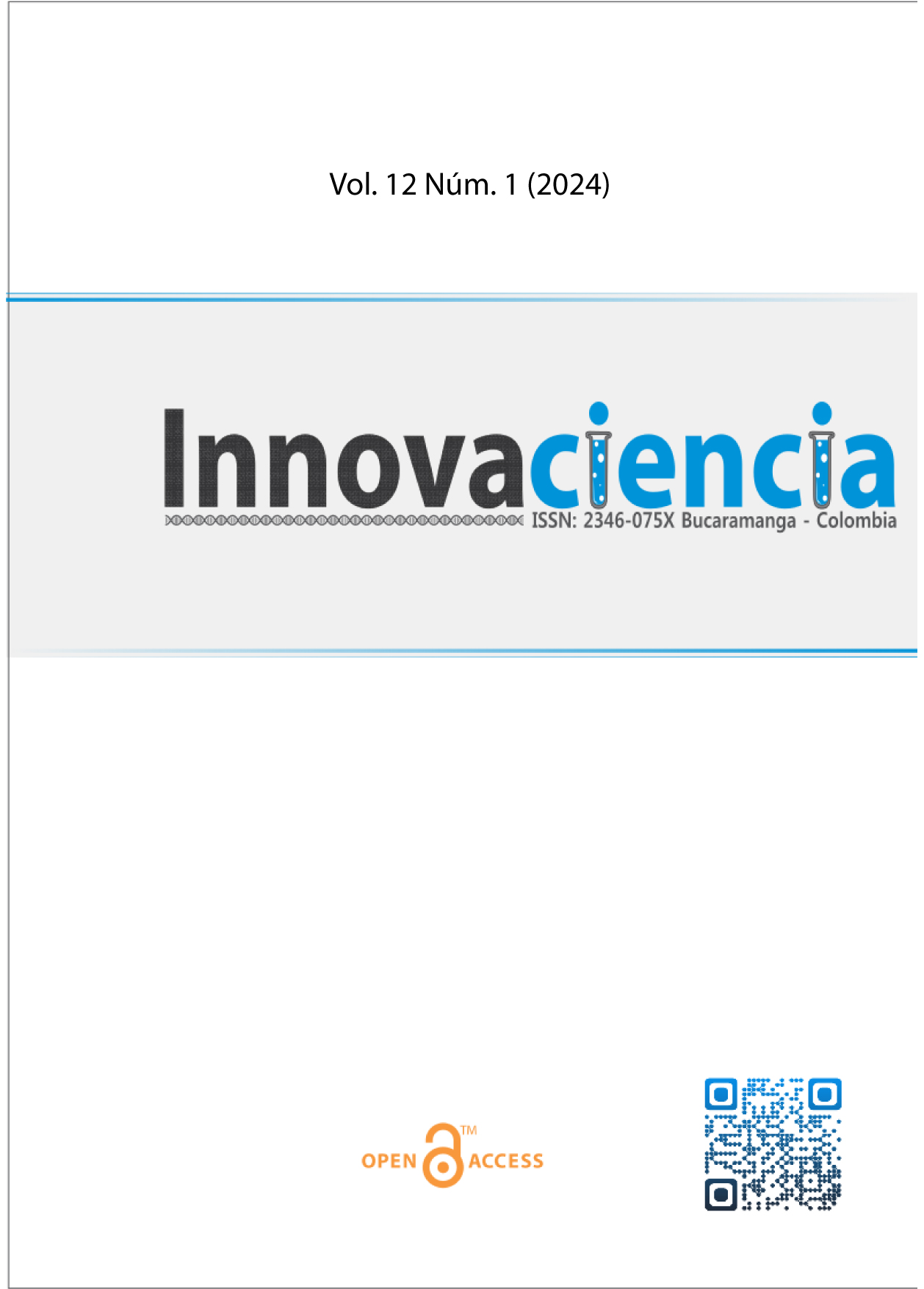Approaches to Calculating Urban Project Boundaries (Agglomeration) in Shymkent City, Kazakhstan
DOI:
https://doi.org/10.15649/2346075X.4416Keywords:
Urban space, agglomeration, urban planningAbstract
Introduction. A thorough evaluation of the calculations used to determine the boundaries of urban planning projects enables a comprehensive understanding of the socio-economic, cultural, and labor connections between cities and settlements. The significance of developing agglomerations in resource-limited environments lies in their potential to achieve a synergistic effect, where the whole exceeds the sum of its parts. Objectives. The research aims to identify the functional boundaries of the Shymkent agglomeration. Materials and Methods. The boundaries of the Shymkent agglomeration were determined using a methodological approach that integrates the agglomeration development coefficient, Reilly's gravitational theory, and GIS technologies. Results and Discussion. Potential countermagnet cities were identified by employing GIS technologies to calculate the force of demographic gravity from proximate settlements to the city of Shymkent. These cities serve as centers of attraction that intercept migration flows towards Shymkent, thus assisting in mitigating excess population growth in the city. Conclusions. The strategic development of suburban settlements and key nodes within the Shymkent agglomeration can effectively manage urban growth challenges, promoting a balanced and sustainable development pattern. it is necessary to prevent the spontaneous growth of settlements caused by population growth, which leads to the formation of imbalances in comprehensive service systems and provides workplaces that can provoke social tensions.
References
Abilov A, Mametov A. Shymkent. In: Urban development and territorial planning in Kazakhstan: origins and development trends. Almaty; 2022. p. 67-80.
Tiwari AK, Antoniuk VS, Lapo AS, Vansovich ER. Managing urban agglomeration processes in Russia in the context of agglomerative and socio-economic development. Heliyon. 2024;10(7). https://doi.org/10.1016/j.heliyon.2024.e28654
You S, Feng Z, You Z, Shi H, Zhao G. Identification and structural characteristics of urban agglomerations in China based on Baidu migration data. Appl Geogr. 2023; 156:102999. https://doi.org/10.1016/j.apgeog.2023.102999
Li L, Tang A, Porter N. Defining and effectively delineating the peri-urban area: a synthesis and analysis from a literature review. J Urban Plan Dev. 2023;149. https://doi.org/10.1061/JUPDDM.UPENG-4456
Zhang X, Wang H, Ning X, Zhang X, Liu R, Wang H. Identification of Metropolitan Area Boundaries Based on Comprehensive Spatial Linkages of Cities: A Case Study of the Beijing-Tianjin-Hebei Region. ISPRS Int J Geo-Inf. 2022;11:396. https://doi.org/10.3390/ijgi11070396
Zhang B, Zhong C, Gao Q, Shabrina Z, Tu W. Delineating urban functional zones using mobile phone data: A case study of cross-boundary integration in Shenzhen-Dongguan-Huizhou area. Comput Environ Urban Syst. 2022;98:101872. https://doi.org/10.1016/j.compenvurbsys.2022.101872
You S, Feng Z, You Z, Shi H, Zhao G. Identification and structural characteristics of urban agglomerations in China based on Baidu migration data. Appl Geogr. 2023;156:102999. https://doi.org/10.1016/j.apgeog.2023.102999
Moreno-Monroy A, Schiavina M, Veneri P. Metropolitan areas in the world. Delineation and population trends. J Urban Econ. 2020;125:103242. https://doi.org/10.1016/j.jue.2020.103242
He X, Yuan X, Zhang D, Zhang R, Li M, Zhou C. Delineation of Urban Agglomeration Boundary Based on Multisource Big Data Fusion-A Case Study of Guangdong-Hong Kong-Macao Greater Bay Area (GBA). Remote Sens. 2021;13(9):1801. https://doi.org/10.3390/rs13091801
Caudillo-Cos CA, Montejano-Escamilla JA, Tapia-McClung R, Ávila-Jiménez FG, Barrera- Alarcón IG. Defining urban boundaries through DBSCAN and Shannon’s entropy: The case of the Mexican National Urban System. Cities. 2024; 149:104969. https://doi.org/10.1016/j.cities.2024.104969
Bosker M, Park J, Roberts M. Definition matters. Metropolitan areas and agglomeration economies in a large-developing country. J Urban Econ. 2021; 125:103275. https://doi.org/10.1016/j.jue.2020.103275
Polyan PM, Treyvish AI. The Centrographic Method of Studying Spatial Structure. Mapping Sci Remote Sens. 1990;27:262-279. https://doi.org/10.1080/07493878.1990.10641813
Paolilli AL. Reilly’s Law and Logistic Type Equation in a Model for Studying Group Selection and Intercity Relations. Global J Arts Humanit Soc Sci. 2023;11(10):69-79. https://doi.org/10.37745/gjahss.2013/vol11n106979
Tannier C, Montero G, Tannier C, Thomas I. Morphological delineation of urban agglomerations. In: Tannier C, editor. Fractal Geometry in Human Geography and Planning. 2024. https://doi.org/10.1002/9781394306565.ch5
Zhou Q, Guo L. Empirical approach to threshold determination for the delineation of built-up areas with road network data. PLOS ONE. 2018;13(3):e0194806. https://doi.org/10.1371/journal.pone.0194806
Kravchenko K, Niemets K, Sehida K, Niemets L, Suptelo O. Methods and approaches of determining the boundaries of agglomerations (basic case Kharkiv region). Human Geography Journal. 2020;28:5-16. https://doi.org/10.26565/2076-1333-2020-28-01
Klaassen LH, Scimemi G. Theoretical issues in urban dynamics. In: Klaassen LH, Molle WTM, Paelinck JHP, editors. Dynamics of Urban Development. New York: St. Martin’s Press; 1981. p. 8-28.
Girres JF. Land-Use Dynamics Analysis Based on Spatial Interactions Models and Satellite Images Time- Series. Remote Sens Spat Inf Sci. 2020; 43:97-101. https://doi.org/10.5194/isprs-archives-XLIII-B4-2020-97-2020
Habrel M, Denis M, Majewska A, Habrel M, Izdebski M, Fenchuk O. Delimitation of the metropolitan areas of Warsaw and Lviv over the last 100 years. The Polish-Ukrainian experience. Cities. 2024; 144:104664. https://doi.org/10.1016/j.cities.2023.104664
Mikhaylova A, Gorochnaya V. Spatial scale of urban agglomeration externalities on the Rostov region in Russia. Regions Cohesion. 2022;12(1):78-101. https://doi.org/10.3167/reco.2022.120105
Ministry of Justice of the Republic of Kazakhstan. On approval of the State Program for the Development of the Aul - El Besigi for 2019-2027. Adilet [Internet]. 2018 Dec 27 [cited 2024 Aug 02]. Available from: https://adilet.zan.kz/rus/docs/P1800000074
Strumsky D, Bettencourt L, Lobo J. Agglomeration effects as spatially embedded social interactions: identifying urban scaling beyond metropolitan areas. Environ Plan B Urban Anal City Sci. 2023;50(7):1964- 1980. https://doi.org/10.1177/23998083221148198
Downloads
Published
How to Cite
Downloads
Issue
Section
License
Copyright (c) 2024 Innovaciencia

This work is licensed under a Creative Commons Attribution-NonCommercial 4.0 International License.
All articles published in this scientific journal are protected by copyright. The authors retain copyright and grant the journal the right of first publication, with the work simultaneously licensed under a Creative Commons Attribution-NonCommercial 4.0 International License (CC BY-NC 4.0), which permits sharing the work with authorship recognition and without commercial purposes.
Readers may copy and distribute the material from this journal issue for non-commercial purposes in any medium, provided the original work is cited and credit is given to the authors and the journal.
Any commercial use of the material from this journal is strictly prohibited without written permission from the copyright holder.
For more information on the copyright of the journal and open access policies, please visit our website.
















